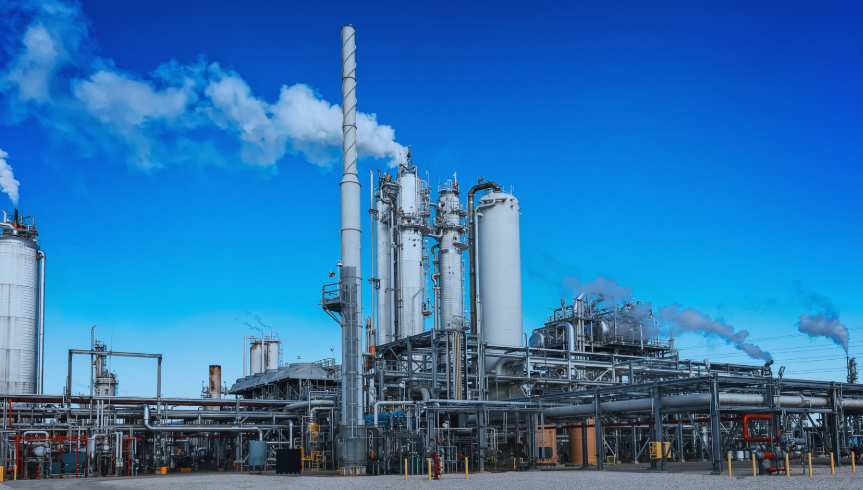Case Study
Pressure Relief Device (PRD) Evaluation for Ethanol Processing Tank
Project: Pressure Relief Device (PRD) Calculations
Industry: Food & Beverage
Location: North Carolina

The Challenge
A new molecular sieve surge tank and associated column system used in the production of ethanol-based specialty chemicals required evaluation to ensure adequate protection against all credible overpressure scenarios.
The system presented two distinct evaluation needs:
- Low-pressure surge tank → required sizing and protection evaluation per API 2000.
- Molecular sieve columns → required PRD evaluation per ASME Section VIII Div.1, API 520 Part 1 & Part 2, API 521 covering pressurized service conditions.
Both equipment types involved flammable fluids, heat input, and multiple liquid/gas feeds—all potential risks if not properly safeguarded. The client needed a detailed, code-compliant assessment before startup.
Our Approach
Cognascents performed a comprehensive PRD analysis, applying the appropriate standards for each equipment type:
Surge Tank (API 2000 – Low Pressure Storage Tank)
- Reviewed process data, including P&IDs, PFDs, pump curves, and operating conditions.
- Evaluated tank blanketing and venting requirements.
- Considered applicable overpressure contingencies per API 2000, including:
External/pool fire
Gas blowby
Blocked or closed outlet (Liquid)
Inadvertent valve operation
Inbreathing
Outbreathing
Control valve failure
- Verified adequacy of the installed rupture disc and pressure/vacuum relief valve (PVRV) for handling both normal and upset scenarios.
Molecular Sieve Columns (API 521 – Pressurized Equipment)
- Evaluated column relief requirements under pressurized service.
- Considered contingencies per API 520, such as:
Cooling/reflux system failure
Global Scenarios (Instrument Air Failure, Power Failure, Steam Failure, CW Failure)
Reverse flow
Isolated with heat Input
Blocked Outlet (Vapor & Liquid)
External Fire
Tube Rupture
- Calculated required relief rates and validated device capacity against manufacturer data.
- Confirmed that existing rupture discs provided adequate fire case protection for each column.
Results
Key findings included:
- Surge Tank: Adequate overpressure and vacuum protection confirmed via existing rupture disc + PVRV, compliant with API 2000.
- Columns: All columns were shown to meet PRD requirements under ASME Section VIII Div.1, API 520 Part 1 & Part 2, API 521 scenarios, including fire case protection.
- Most normal and upset scenarios were safely relieved by existing devices, avoiding costly hardware upgrades.
- The team identified theoretical scenarios that could be ruled out as non-credible based on system design and existing controls.
Value Delivered
By distinguishing the correct standards for each piece of equipment and validating existing safeguards, Cognascents provided both safety assurance and measurable cost savings:
- Surge Tank (500-gallon ethanol service): Replacement would cost $18,000–$30,000. Confirming adequacy of existing PRDs avoided that expense.
- PVRVs: Typically $300–$10,000. Existing unit was confirmed sufficient.
- Molecular Sieve Columns: Adequate fire protection via rupture discs avoided redesign and replacement of molecular sieve media ($770–$3,850 per column).
- Rupture Discs: ($60–$500 each) validated for proper sizing, reducing risk of premature failure or procurement delays.
Overall, the project delivered tangible value by confirming that existing safeguards were sufficient – helping the client avoid costly system modifications while ensuring compliance and process safety.
Outcome
The PRD analysis, conducted with API 2000 for the surge tank and ASME Section VIII Div.1, API 520 Part 1 & Part 2 & API 521 for the sieve columns, enabled the client to move forward with confidence in both compliance and system safety.
Related Cognascents Solutions
At Cognascents, we have the expertise to meet your needs. Explore the variety of related services we offer and discover how our tailored approach can support your business.
Our mission is to empower our clients with innovative solutions that enhance process safety, reliability, asset integrity, and technical business acumen. To elevate your engineering solutions, please contact us today.



